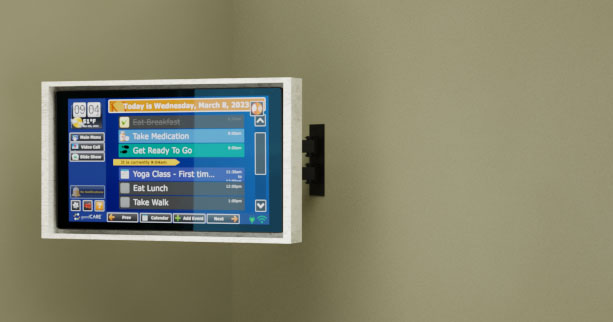How to become a champion of technology
Whether your company provides housing or in-home care, you need tools you can count on. Many organizations feel overwhelmed by the processes of adopting new technologies to help improve care delivery, lower expenses, and raise revenue. Decision makers see the benefits of using a variety of technologies, but the idea of institutional change that impacts work flow can be daunting.
Organizations that focus on innovation shared insight on how to evaluate, implement and measure the success of technology. And to help you in your efforts, they highlighted areas to be cautious.
Choose your partner wisely
Kaitlin Cuffe, strategic initiatives coordinator at Eskaton in Northern California says the vendor and client relationship must be strong. Eskaton, a nonprofit focused on transforming the aging experience, looks for technology partners with similar culture and values.
“Typically we are approached by technology companies,” says Cuffe. “We have implemented a technology pilot proposal asking them to fill out a form eight questions long.” Staff time, resident time, costs associated, and process for uninstalling are uncovered before moving forward in the discussion. “Any time we get a proposal we send it out to the [Eskaton] people who would be interfacing,” explains Cuffe. Staff who are expected to work with the technology can give feedback in the decision making process.
Develop technology champions
“We go into a pilot with buy-in when there is a champion,” says Prentiss. “One to two champions serve as an internal point person.” Cuffe, Eskaton’s champion, is the person accountable to keep the project going. Cuffe’s role in the eight week pilot was to:
- Identify participants
- Coordinate program launch
- Schedule all program components
- Communicate to participants, stakeholders, and Lively customer support
- Develop and conduct surveys: A ten question baseline survey and 15-question post survey
Managing time and expectations is critical for the champion. While this pilot lasted only eight weeks, there was preplanning and post evaluation. Upon completing the evaluation, the decision will be made if it should be scaled.
Create a culture of technology
In 2013, Emeritus began testing the use of iPads with residents. Ginna Biak, National Director of Innovation and Resident Technology, conducted an eight building pilot where 5-10 iPads were made available for residents to check out. Weekly trainings were offered and Internet cafes and kiosks were deployed. Biak says they needed to “make it part of the culture”.
The iPads were loaded with apps Biak selected for social engagement and entertainment. Two vendors who understand the mission and the industry were selected. LivWell Health built the platform on Sales Force and Sitelligence developed an iPad app for resident and staff use.
“Not a lot of technology companies are understanding the silver tsunami,” says Biak. “It’s encouraging to see the big companies are starting to.” During a recent pilot in Freemont, California, representatives from Apple attended the training. In this pilot, 20 residents were given iPads and a baseline survey. At the end of the pilot, a post survey will be conducted and compared to 20 resident surveys who did not receive the iPads.
Biak says they are “trying to come up with a more cohesive, comprehensive solution for a larger roll out.” It can be tough recruiting champions in a large organization, but according to Biak, changes in technology expectations and the new hire process helped shift the Emeritus culture and lay the foundation for a larger deployment.
Deploy small, then scale
Neil Tantingco, owner of Evergreen Residence, says technology is a key contributor to the 100% occupancy and waiting list. In 2013, he began testing technology in two of the apartments in his Central California assisted living and memory care units. “I didn’t know how it would be accepted by my residents or how difficult it was to set up,” explains Tantingco. “I didn’t want to invest all that money for something that may not be proven.” He put it to a litmus test:
- Will my residents use it?
- Will the family embrace it and use to the video conferencing to increase social interaction?
- How will my staff react to it?
Tantingco now uses GrandCare Systems throughout the community and as remote care monitoring for an in-home care solution. This allows him to serve the waiting list and others living in their own homes.
Tantingco recommends to always do a beta test, create a roll out schedule, and set a reasonable, attainable goal. “Roll it out small and develop a work flow. Make sure it doesn’t disrupt your business process.”
Define success before you start
Before testing, develop a hypothesis. For example:
If seniors use technology to communicate with family via email, video conferencing, or Lively Grams, then they will experience less social isolation, less depression, and their quality of life will improve.
Create a list of quality measurements. Your vendor can help you with the metrics. If not, engage with an academic institute or an industry association such as the Center for Aging Services Technologies (CAST).
Success is not limited to just the resident experience. Make sure to include measurements of staff time and dollars invested in order to measure ROI.
To read full article click here.
Visit www.grandcare.com for more information.







